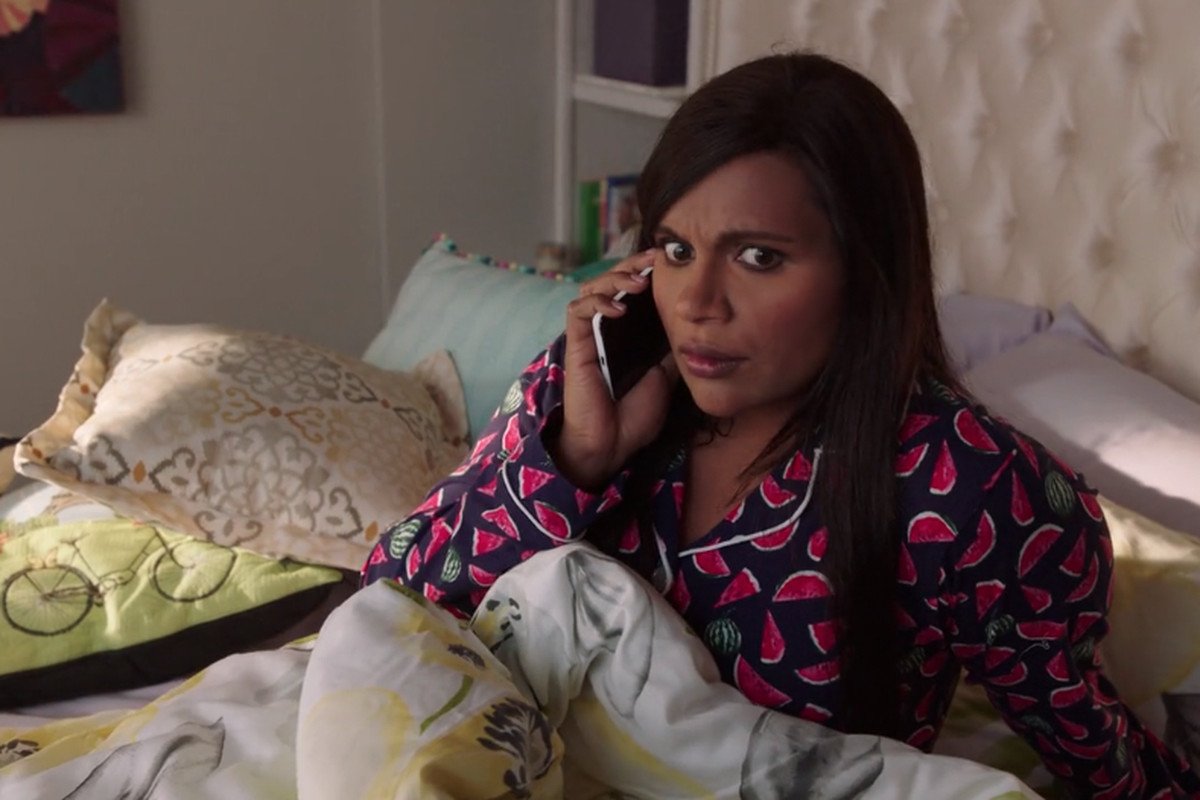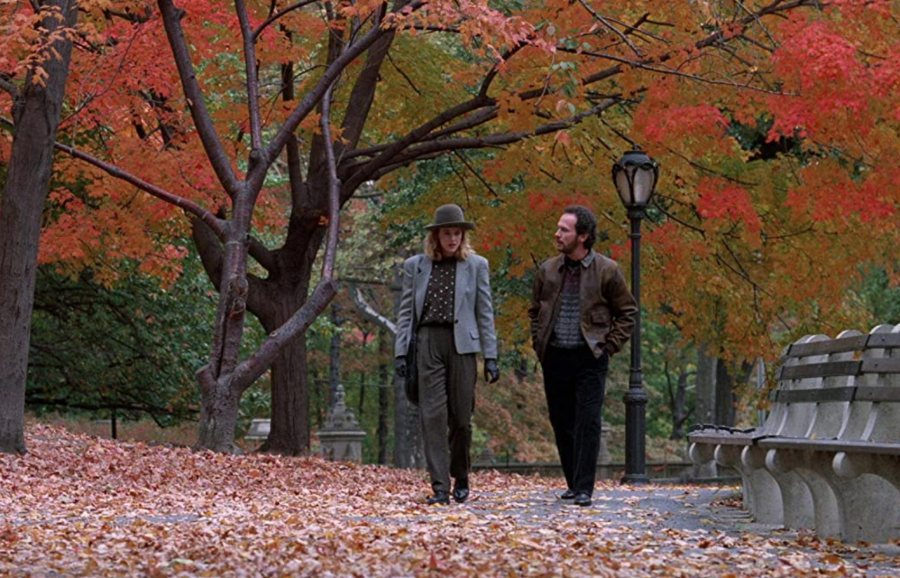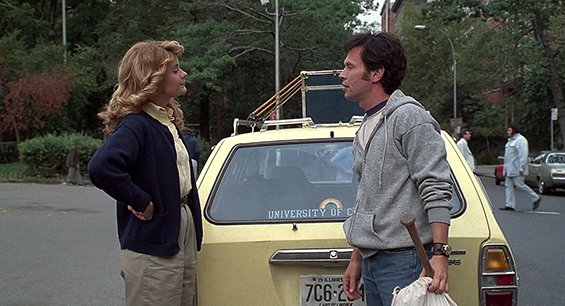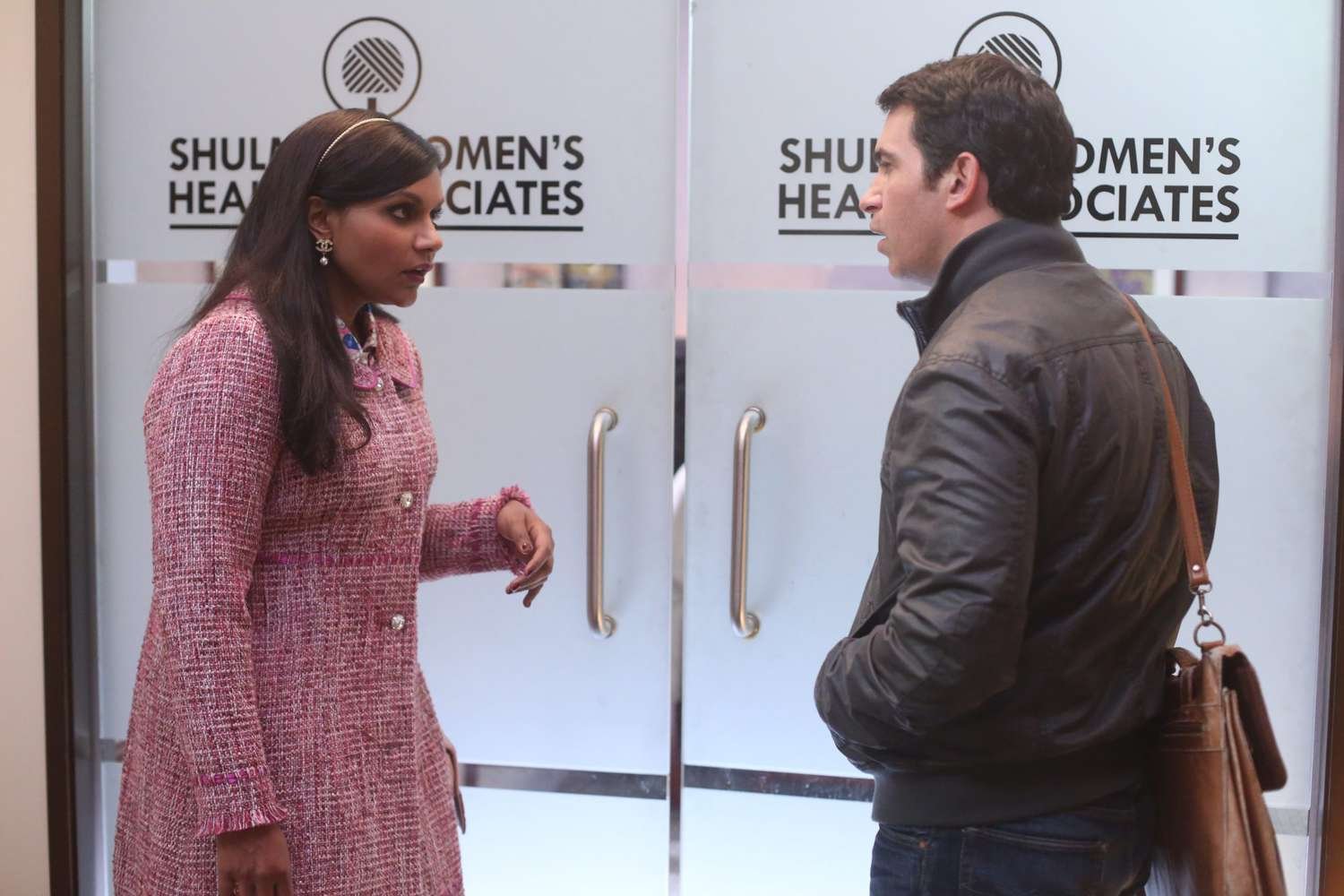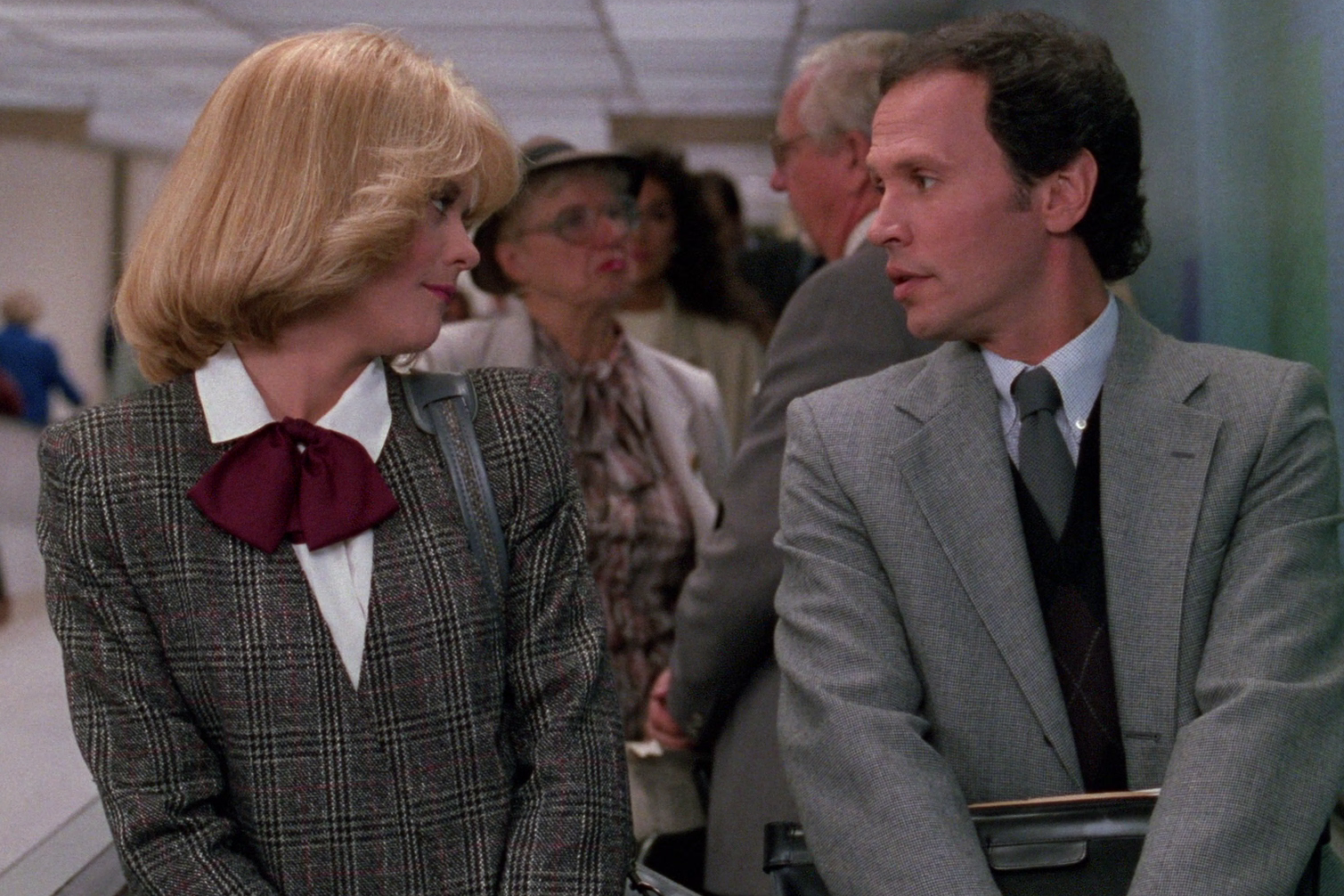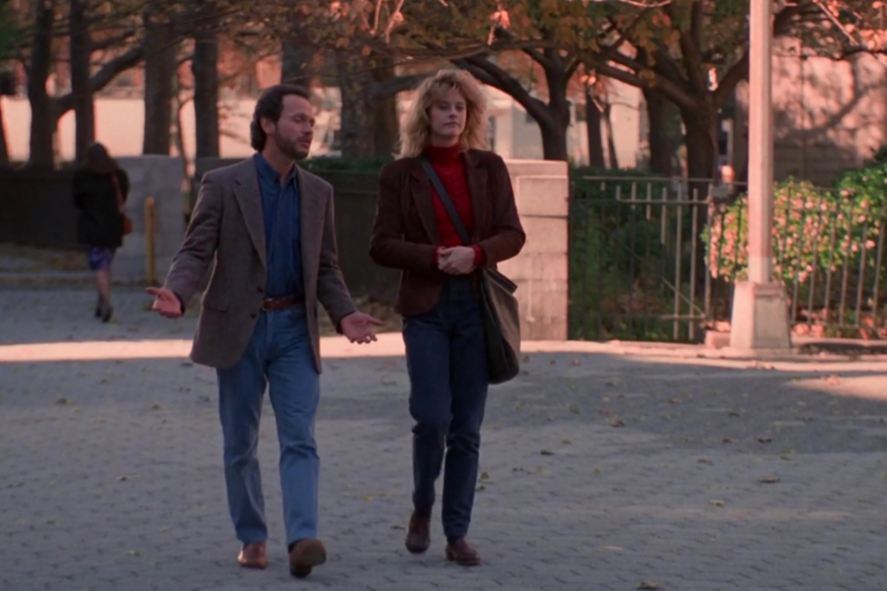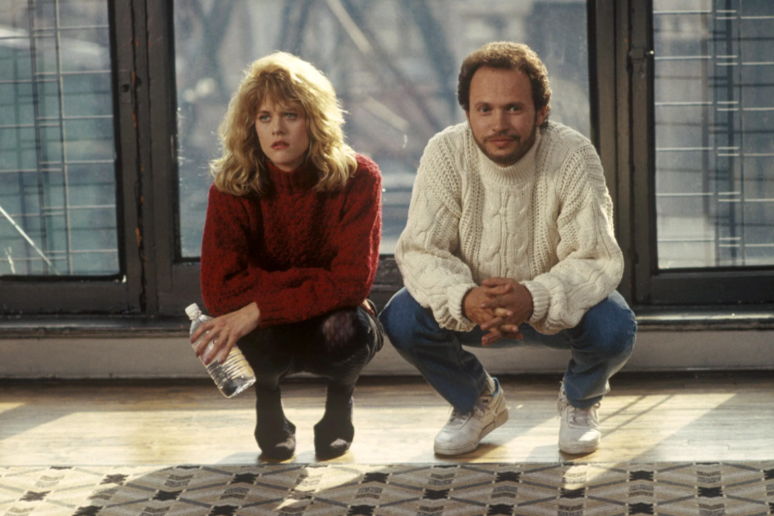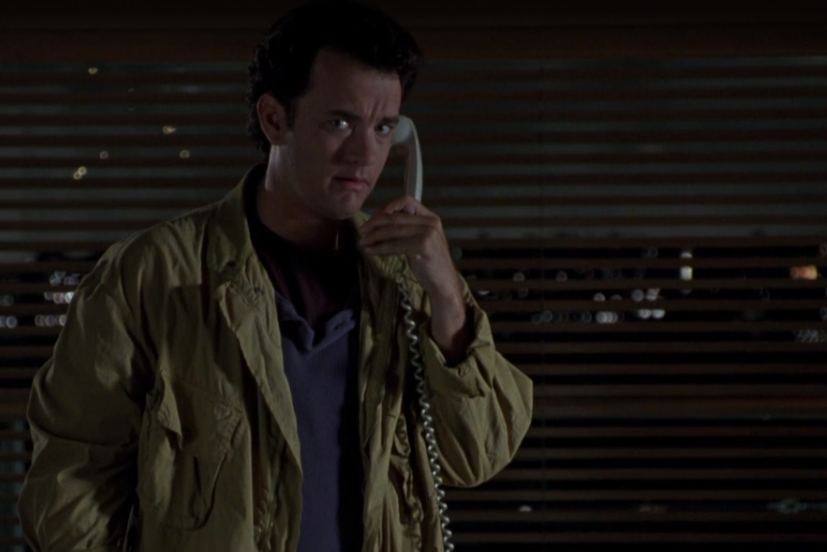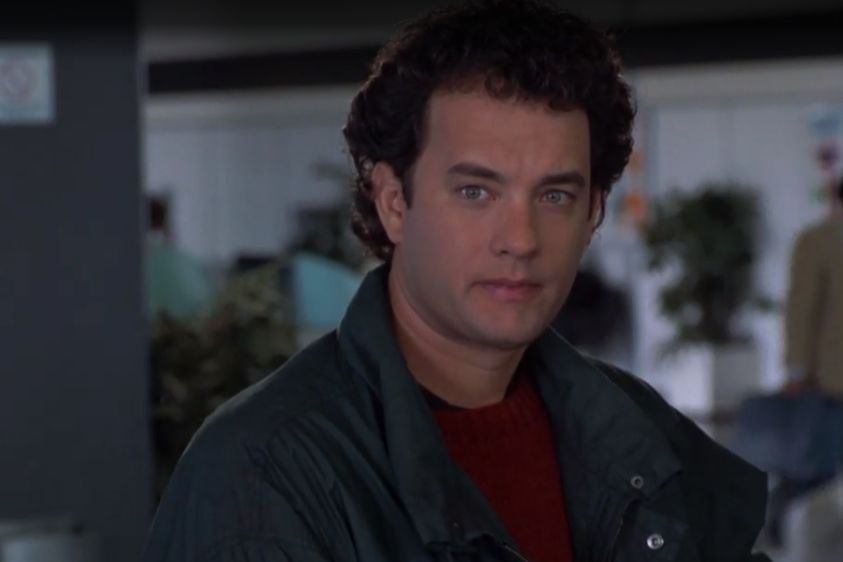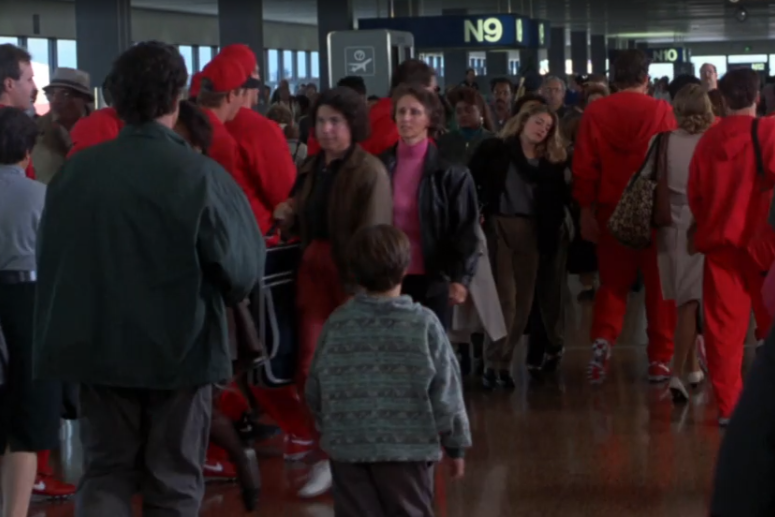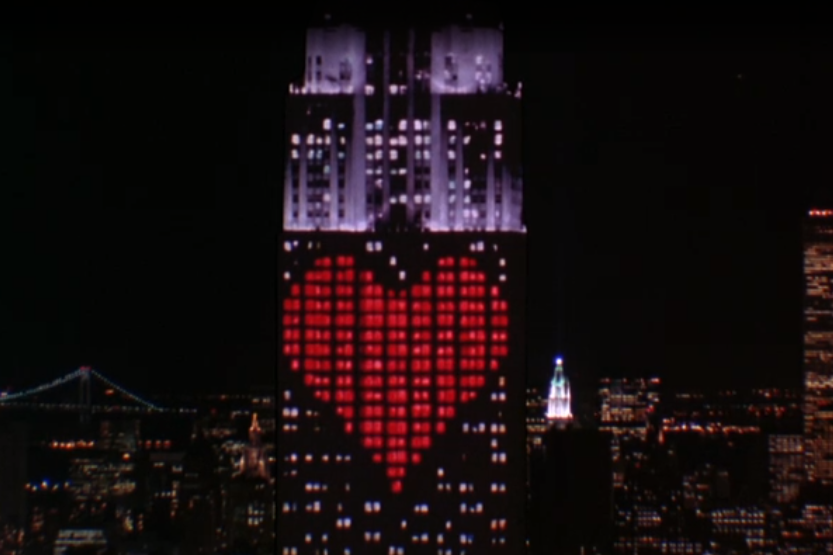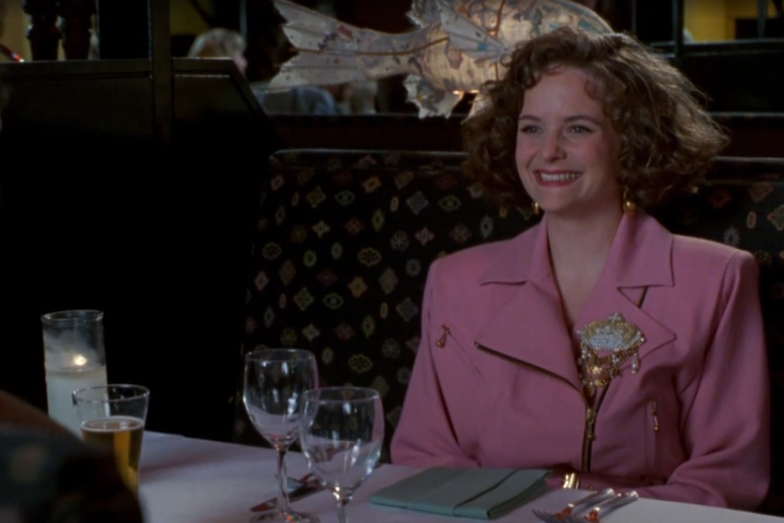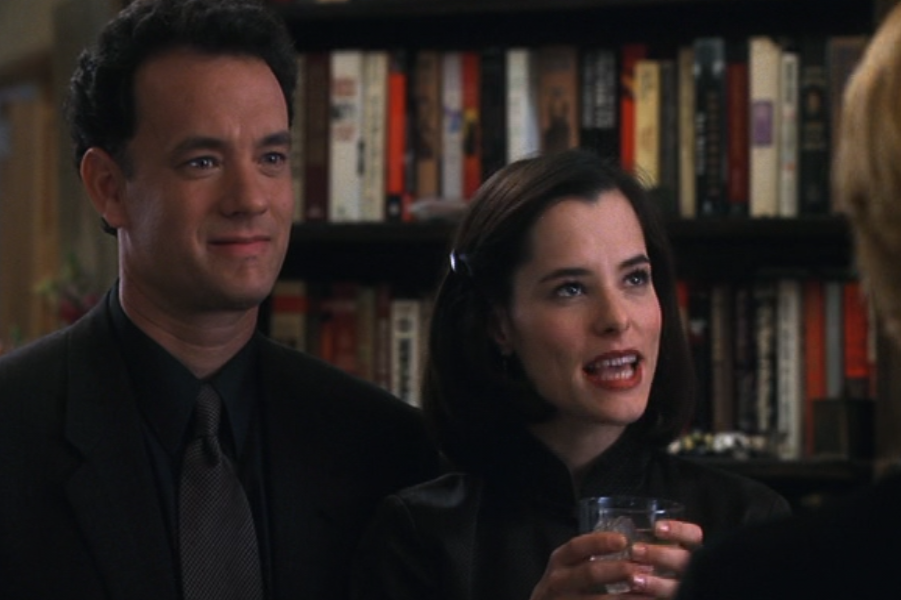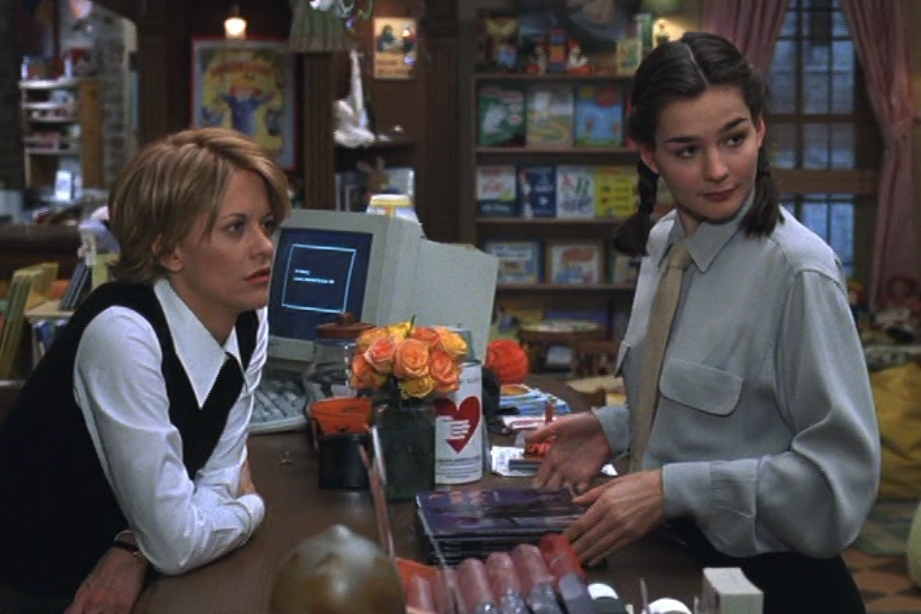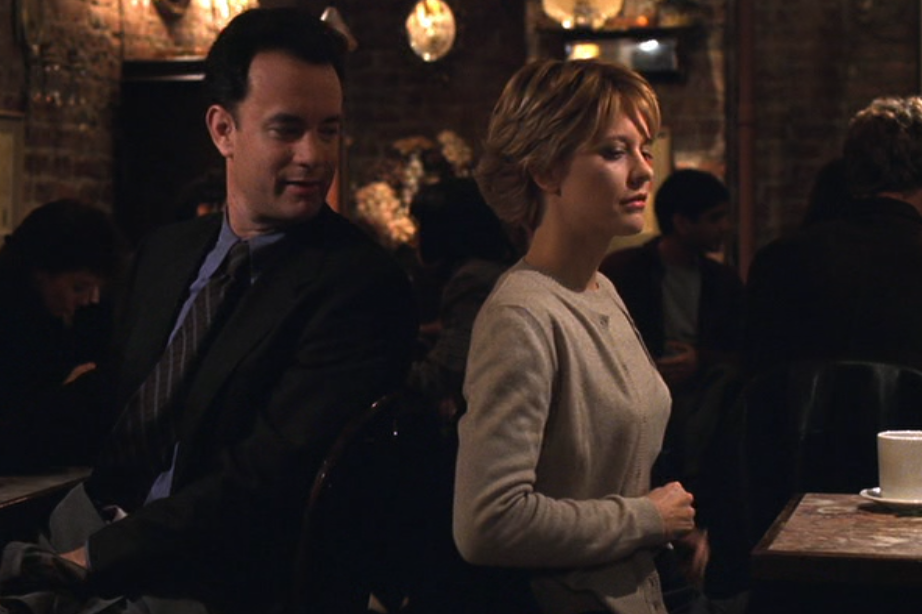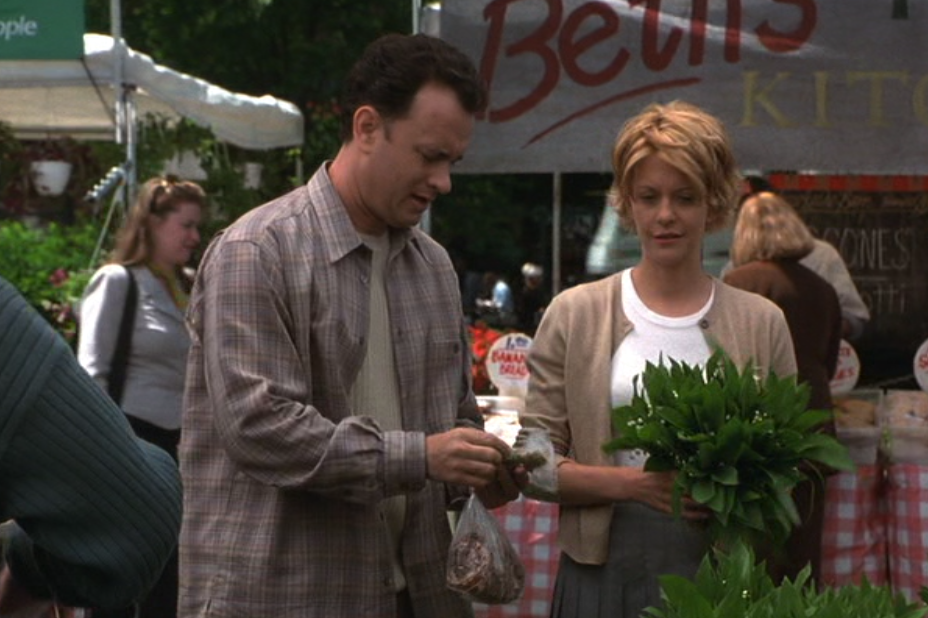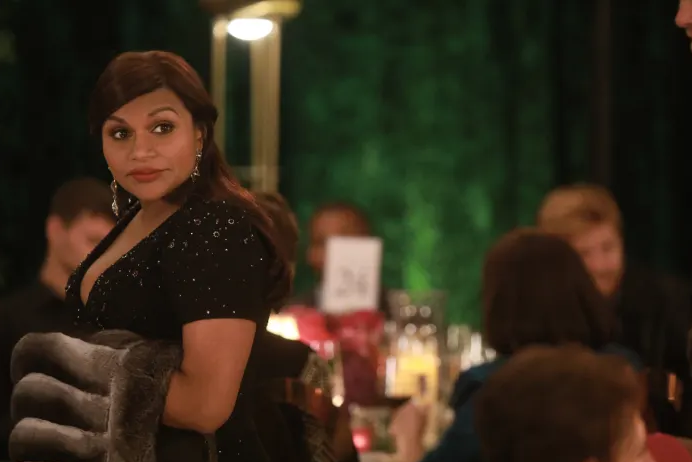Mindy and Nora
Costume Designing the Rom-Com
What to pick for the longest night of the year, in the depth of the holiday season? A Christmas movie, maybe—but not the traditional kind. I always love an unconventional take on this season (Carol and Tangerine reign supreme, Eileen a recent edition to the canon), and for a day in December, you can’t go wrong with Nora Ephron or Mindy Kaling. Conventional Christmas movies and specials can sometimes become cloying, but Ephron and Kaling each capture the duality of the season in a way that feels true: It is cozy and it is cold; it is beauty and it is despair. It is the season when Kathleen Kelly hangs ornaments and thinks of her mother, when Mindy Lahiri walks to her old apartment and contemplates leaving her partner.
But let’s back up a little: Ephron, of course, is the queen of eighties and nineties romantic comedies, with her holy trinity of When Harry Met Sally . . . , Sleepless in Seattle, and You’ve Got Mail—all of which Kaling drew inspiration from when crafting and starring in her eponymous sitcom, The Mindy Project. The show’s episodes are rife with references to Ephron’s work, most especially the season two finale, “Danny and Mindy.” But as TV Ate My Wardrobe explains, Kaling isn’t a “copycat”; rather, “she uses what are now considered rom-com tropes (some of which Ephron pioneered) as jumping off points to subvert or celebrate.”
Mindy in 6.1
No greater subversion is the show’s costumes, designed by Salvador Perez (a Suds favorite for his work on Veronica Mars). Kaling’s clothes are playful and poppy, her New York the kind of sleek and clean that only an L.A. set can create. When she’s not wearing scrubs and delivering babies, Dr. Mindy Lahiri loves a button-down under a sheath, a coat and dress set—almost always rendered in a few bright colors and patterns, with a perfectly coordinated purse, statement necklace, and heels. Even at home, she’ll take a kitschy pajama set over sweats.
Note the coordinated clutch made from hemmed fabric (3.16)!
Much of Mindy’s wardrobe is designer, though Perez reworked or custom-built many of her most fabulous looks. Altogether, her clothes create the character: a woman who is unapologetically confident and bold, who “doesn’t care if you don’t like [her look] as long as she thinks it is cute” (TV Ate My Wardrobe). In this way, Mindy is subverting not just Ephron’s own visual style but fashion as a whole: As this Refinery29 article explores, Mindy’s costuming inspired many women, South Asian women in particular, to wear all the things they’d been told darker-skinned or curvy women shouldn’t wear. To quote Kaling herself, “feeling insecure about her body was never one of [Mindy’s] issues, and I wanted our show to communicate that stylishness transcended size” (Instagram).
Harry and Sally in their beautifully coordinated fall layers
Ephron’s world is less heightened than Kaling’s: Her films were shot in the cities themselves—Seattle, Baltimore, and her beloved New York—and their costuming is best described as “urban uniforms” (I’ll Have What She’s Having): chic, modest, and practical clothes for life in the city, in a palette dominated by neutrals and solids. They’re the kind of clothes that still inspire style articles and aesthetic trends—and, indirectly, that was Ephron’s intention. When she was filming Seattle—only her second time in the director’s chair, as When Harry was helmed by Rob Reiner—she became “obsessed” with creating a “timeless” style for her female lead: “If Sleepless was going to last, then it couldn’t look dated in twenty years. And so it followed that Meg Ryan must be clean-cut, conservative, and American classic” (I’ll Have).
I must aside here, because the idea of “classic” and “timeless” style, and our culture’s endless interest in it, is almost dictated by wealthy whiteness. (No one is writing articles about how Mindy’s mixed prints were “classic,” despite how influential they were on the fashion industry.) Though set in racially diverse cities, Ephron’s movies are blindingly white, and save for Mindy herself, so is The Mindy Project. (During its run, the show was rightly criticized for its almost all-white supporting cast, not to mention its white boyfriends-of-the-week.)
Kathleen (center) and her bookshop employees in You’ve Got Mail
Still, for all the differences between Kaling’s and Ephron’s costumes, they serve the same purpose: to craft characters, and to create conflict and connection between those characters as their romance unfurls.
When Harry Met Sally . . .
(designed by Gloria Gresham)
First, they must meet. In When Harry Met Sally . . . , Sally Albright and Harry Burns meet just out of college, paired up for a road trip to New York by Amanda, Sally’s friend and Harry’s girlfriend. In the pilot of The Mindy Project, Mindy and her love interest, Danny Castellano, have already met; they’re doctors at the same practice, though their relationship remains antagonistic. We must wait until season four, once they’ve already begun dating and had a baby, to see the first time they met.
Like Danny and Mindy, Harry and Sally instantly dislike each other. Sally is chipper; Harry is pessimistic. Sally is a perfectionist; Harry accidentally spits sunflower seeds on her car window. Their differences carry down to their clothes: Sally wears a preppy yellow blouse and khaki shorts, her navy cardigan coordinated with her knee socks. Harry is more casual in his navy-and-white ringer T-shirt, jeans, and a gray zip-up hoodie. When they finally get to New York, they’re relieved to leave each other behind—Mindy and Danny only wish they could.
On Mindy’s first day at the practice (4.13), she wears what Perez calls her “Barbie suit” (HelloGiggles): hot pink tweed paired with Chanel earrings. Beside her, Danny looks somber in his brown leather bomber and plaid scarf; he is the cantankerous longtime New Yorker to Mindy’s chatty transplant. Where her style is exuberant and daring, his is subdued and safe.
In fact, if you looked at costumes alone, you might believe that Mindy is destined for the practice’s other handsome doctor, Jeremy Reed. He favors classic suits with bright shirts and printed neckties, much more in line with Mindy’s own love of color and pattern.
But while Danny and Mindy’s meeting sticks the first time, Harry and Sally must run into each other two more times before they can become friends. Five years after their road trip, they share the same flight: Sally in a black-and-white plaid blazer and white blouse; Harry in a gray blazer, black-and-gray argyle sweater vest, and white button-down. Their outfits reflect their newfound adulthood—careers and serious relationships—while also underscoring the antiquated idea that prevented their initial friendship: college Harry’s declaration that men and women can’t be friends. Traditional ideas about gender are still on full display: Sally in a feminine red bow and Harry in a masculine gray necktie.
It takes a third meeting, five years later in a bookshop, for Harry and Sally to truly become friends. And it’s no surprise, then, that they’re suddenly on the same sartorial level, both in jeans and brown blazers. Indeed, as their friendship deepens, their style only becomes more entwined, their feelings harder to ignore. It had to be you indeed.
Sleepless in Seattle
(designed by Judy Ruskin)
But while Harry and Sally and Danny and Mindy are almost always sharing a screen, Sleepless’s leads, Annie Reed and Sam Baldwin, live on opposite coasts. Annie is a Baltimore reporter who hears Sam and his son, Jonah, on a radio program; Sam is a Seattle architect still deep in grief eighteen months after his wife’s death. Like thousands of women across the country, Annie is captivated by Sam; her letter to him (mailed by her delightful bestie, Rosie O’Donnell) leads to their eventual meeting at the top of the Empire State Building, as arranged by Jonah.
So how do you costume your romantic leads when they don’t meet until the very last scene? How do you show their connection when they’re almost never side by side?
A pop of dark red ties Sam to Annie as she listens to him on the radio.
The answer, well, is color. As in Ephron’s other films, Sleepless’s costumes favor a soft, muted palette: grays, browns, and blues well suited to the moody Seattle rain. The exception is red: Deliberate pops of the color show the growing connection between Annie and Sam and foreshadow their eventual meeting.
When Annie first hears Sam on the radio, she’s wearing a dark red dress; when she hears him a second time, her bathrobe is red, not to mention her home phone.
And when Annie goes to Seattle, looking for Sam, he sees her at the airport and is instantly struck by her: Bam, red sweater. Bam, a crowd of people in red sweatsuits prevent him from going after her. Even Annie’s Seattle rental car is red, the Mack truck that almost hits her when she sees him with another woman. Red is the love that Annie has been looking for, the “magic” she’s never experienced with her fiancé, Walter.
After her disappointment in Seattle, Annie resigns herself to her engagement to Walter and their Valentine’s Day trip to New York. Still, she can’t stop thinking about her suggestion to meet Sam on the observation deck, the city around her festooned with red Valentine’s decorations. When she looks out the window of the restaurant, she sees the Empire State Building lit up with a red heart. But when she gets to the top, it seems too late: The deck is empty but for Jonah’s backpack. Sam and Jonah return to retrieve it, and Annie and Sam finally meet. The red, this time, is in Jonah’s coat and backpack: He brought them together again.
Cast aside for Annie, I should note, is Victoria, a coworker Sam tried dating in a desperate attempt to connect with a woman in real life, not over radio waves. On their first date, Victoria wears a bubblegum-pink motorcycle-style jacket with gold embellishment—completely ostentatious compared with the film’s other fashions. In fact, Ephron didn’t like the outfit; it only made it into the scene because there was no time to get another option (I’ll Have). Still, I think it works perfectly for the not-quite-right Victoria; she’s giggly, overexuberant. It seems no coincidence that pink is a diminutive version of red.
How do I sleep at night? Well, I use a wonderful over-the-counter drug, Ultradorm.
Not only that, but it’s an outfit I can easily imagine Mindy wearing, perhaps with a different embellishment. For in both personality and fashion, Mindy is much more an Ephron side character than an Ephron lead, and that’s what makes her so fun—and her storylines so funny. In season one, for example, she is dumped by a “Harry” type for his “Sally” best friend—leaving her, as she declares, to be the “Joan Cusack” character (1.14). She’s not Annie but Victoria, not Kathleen Kelly but Patricia Eden, Joe Fox’s editrix girlfriend who tosses off my favorite line as only Parker Posey can do. No surprise, Patricia is also the biggest “fashionista” (InStyle) in the film.
You’ve Got Mail
(designed by Albert Wolsky)
Which brings me to the last movie and to the idea of endings. Kathleen and Joe spend almost the entire film at war: She runs a small children’s bookshop on the Upper West Side; he’s opening the latest Fox Books megastore around the corner. Over email, they’re unknowingly falling in love as anonymous pen pals—a fact that Joe discovers partway through the film.
Christina (right) is the real sleeper fashion icon of this movie.
Frank, Kathleen, and knife
Kathleen is no “fashion plate”; instead, she chooses a “studious” combination of turtlenecks, jumpers, and button-downs, almost always in gray, black, and white (Overdressed for Life) and often repeated for realism (TN2 Magazine). It’s the perfect practical wardrobe for a bookstore owner who must go from shelving stock to squatting on a stool for story hour. Her boyfriend, Frank, who writes for an alt weekly, is appropriately alternative in a corduroy blazer.
Joe, on the other hand, is almost always in a shirt and tie, often a full suit, usually rendered in gray or black. He is, as Kathleen tells him, “nothing but a suit,” concerned with profits over people. The movie, in a way, is more about his growth than Kathleen’s; as Wolsky points out, she “doesn’t change that much” (InStyle). The cardigans and dresses she wears in the later scenes of the film, as she and Joe become friends, are simply the springtime versions of her earlier fall and winter wear.
Kathleen’s outfit is just a variant of the one above, but Joe’s is a complete flip.
It’s Joe who we see become a softer, more open person through his clothes: his plaid shirt open over a T-shirt, his suits traded for polo shirts and khakis. You could almost forget that he’s willfully withholding his identity as Kathleen’s pen pal—between this and Annie’s stalking in Sleepless, Ephron loves a romantic trope that easily slides into horror.
The Mindy Project, of course, also came to end, though after six seasons. Danny departed the show in season four, after their relationship fell apart over his controlling behavior: He wanted Mindy to stay at home with their son; she wanted to keep working. Turns out, cute banter with a love interest isn’t always so cute in a relationship—sometimes, it’s the reflection of a real mismatch in values.
Mindy in 6.10
Danny returns at the end of season six to bring a happy ending for the couple—though it doesn’t quite feel happy, as this article explains, without real investment in Danny’s growth. Mindy’s final outfit, too, is a twist: As Perez told Fashionista, he thought “fans would expect . . . a bold color,” and so he decided on black.
I understand his reasoning: a black dress after a parade of colors feels declarative, almost “cut to black.” But combined with a rushed return to a relationship that previously caused Mindy great unhappiness, the dress also feels like a departure from her character, from the joyous woman who wore any and every color that she desired and screw anyone who says otherwise.
See, I told you it wouldn’t all be happy.
[I’ll be back on Thursday, 1/18, with my next post. Until then, let me know your thoughts with a reply to the newsletter or forward it along to an Ephron-loving friend.]
